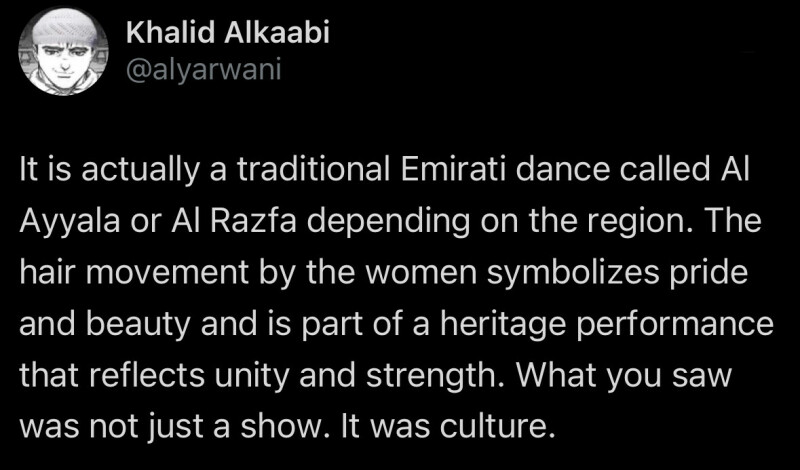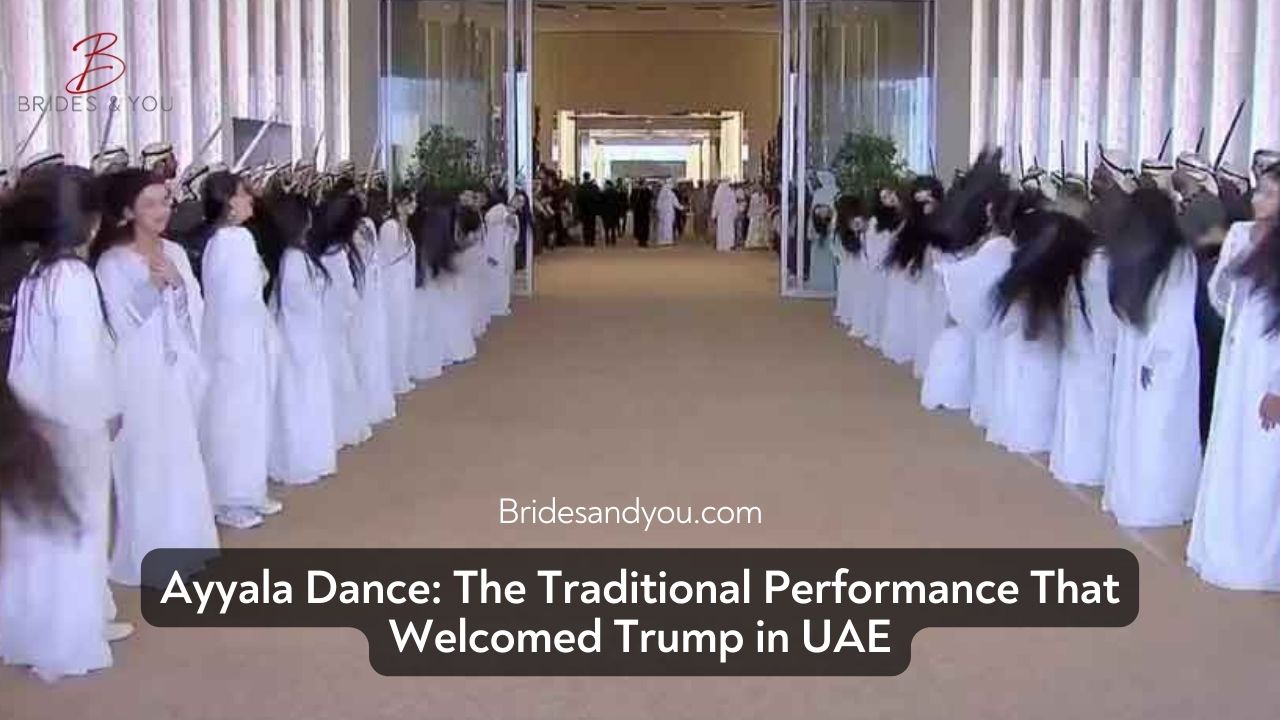When former US President Donald Trump concluded his Gulf visit in Abu Dhabi, the global audience was captivated not just by the political optics, but by a unique and mesmerizing cultural performance. As he was received by UAE’s President Sheikh Mohamed bin Zayed, Trump was welcomed with traditional Emirati hospitality — flags waved by children and a group of girls dressed in white gracefully tossing their hair side to side in rhythm. The hair-tossing dance welcoming Trump in UAE instantly became a hot topic online.
But while some admired the visual display, others — especially those unfamiliar with Emirati traditions — were confused, skeptical, or even critical. For many, this moment was their first encounter with Al Ayyala, a centuries-old cultural tradition rooted in the heritage of the Arabian Peninsula.

What Is Al Ayyala? Understanding the Tradition
Often referred to informally as the “hair dance,” Al Ayyala is a traditional folk performance embedded in the cultural fabric of the UAE and northwestern Oman. It is recognized by UNESCO as part of the Intangible Cultural Heritage of Humanity, reflecting its enduring significance.
The traditional Al Ayyala performance typically involves two rows of men standing opposite each other, moving in rhythm with bamboo sticks, mimicking battle formations. It is accompanied by deep drumbeats, poetic chants, and dynamic movements. Women and girls, often positioned at the forefront during celebratory occasions, complement the performance by rhythmically tossing their long hair in sync with the beat — a movement that symbolizes grace, pride, and unity.

A 400-Year-Old Tradition Misunderstood
The hair-tossing dance welcoming Trump in UAE was more than a performance — it was a symbolic representation of unity, strength, and cultural pride. Unfortunately, social media reactions from global audiences ranged from confusion to outright disrespect. Some users labeled it “pagan,” “disturbing,” or “shameless” — criticisms that stem from a lack of cultural understanding.
In truth, this dance is a 400-year-old Bedouin tradition. It’s a form of storytelling — preserving history through poetry, rhythm, and communal involvement. Far from being “inappropriate,” it is a powerful expression of identity and continuity, passed through generations in the Gulf region.

Why Cultural Sensitivity Matters
It’s easy to misinterpret what we don’t understand. But when viewers immediately criticize an unfamiliar cultural act, they miss a critical opportunity to learn. In today’s interconnected world, appreciating and respecting diverse customs is vital.
As one X (formerly Twitter) user pointed out, “the hair movement by women symbolises pride and beauty… What you saw was not just a show. It was culture.” Labeling it as “paganism” is not only inaccurate but dismissive of a region’s deeply rooted heritage.
Moreover, gender bias subtly plays a role in these critiques. If men had performed the same dance, wielding sticks and chanting poetry, the reception might have been vastly different. But the moment women take center stage, simply swaying their hair with elegance, it becomes controversial.

Celebrating Al Ayyala: A Cultural Treasure
Al Ayyala is more than performance art — it’s a celebration of life, legacy, and resilience. It connects communities, celebrates historic values like bravery, dignity, and honor, and reaffirms a sense of belonging.
As highlighted by Visit Abu Dhabi, Al Ayyala symbolizes the gallantry of Bedouin life, not a religious ritual. It’s a national treasure performed during weddings, festivals, and significant state visits, like the one involving President Trump.
Instead of mocking or dismissing, we should celebrate such vibrant cultural expressions. The dance welcoming Trump to the UAE wasn’t “weird” or “shameless” — it was deeply meaningful and powerfully symbolic.

Final Thoughts: Look Beyond the Surface
The hair-tossing dance welcoming Trump in UAE stands as a reminder that traditions carry stories, not stereotypes. What might look unusual to one observer could be a powerful cultural symbol for another.
Instead of rushing to judge, let’s take a moment to understand. Let’s ask, listen, and learn. Because respecting a culture starts with curiosity — not criticism.

